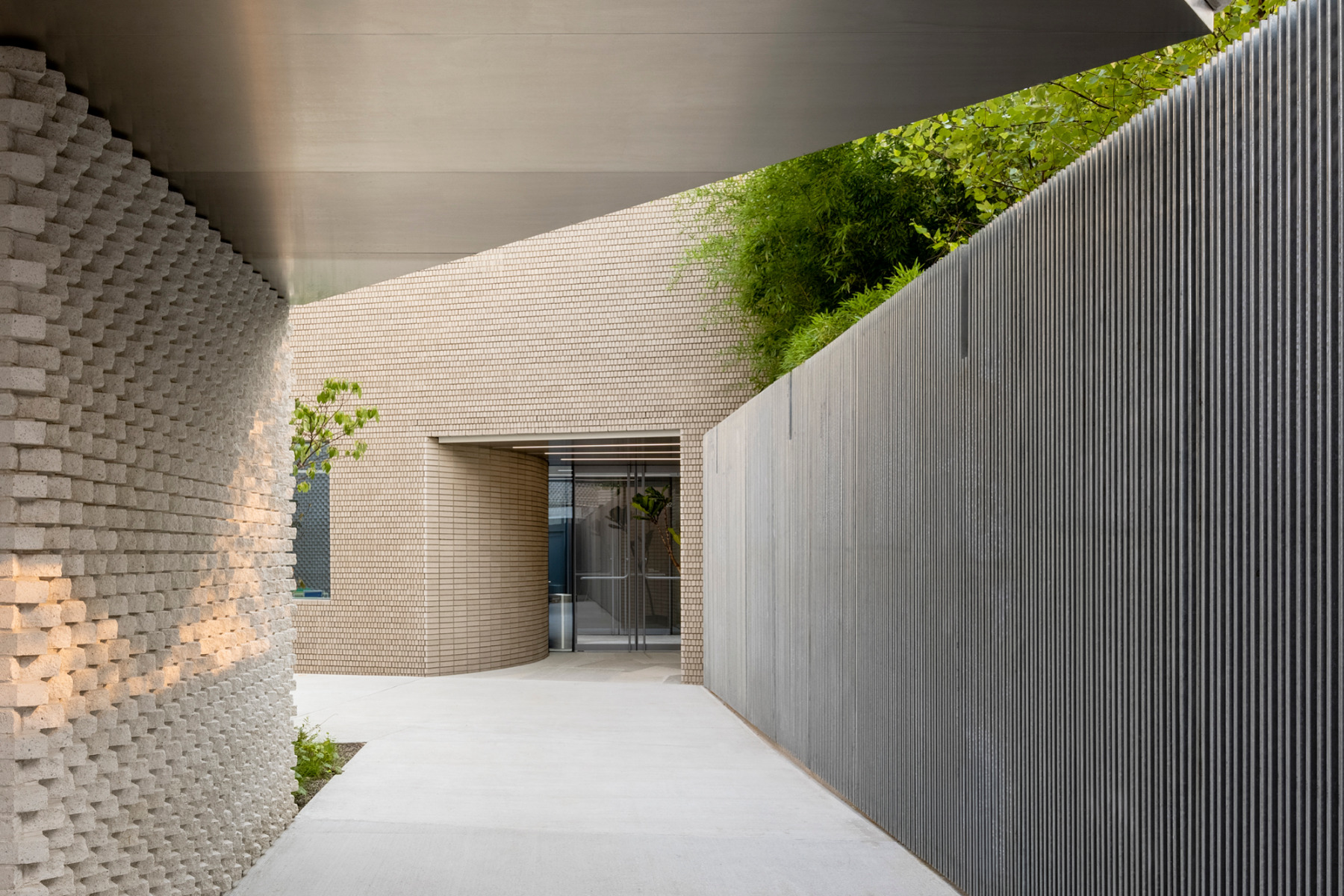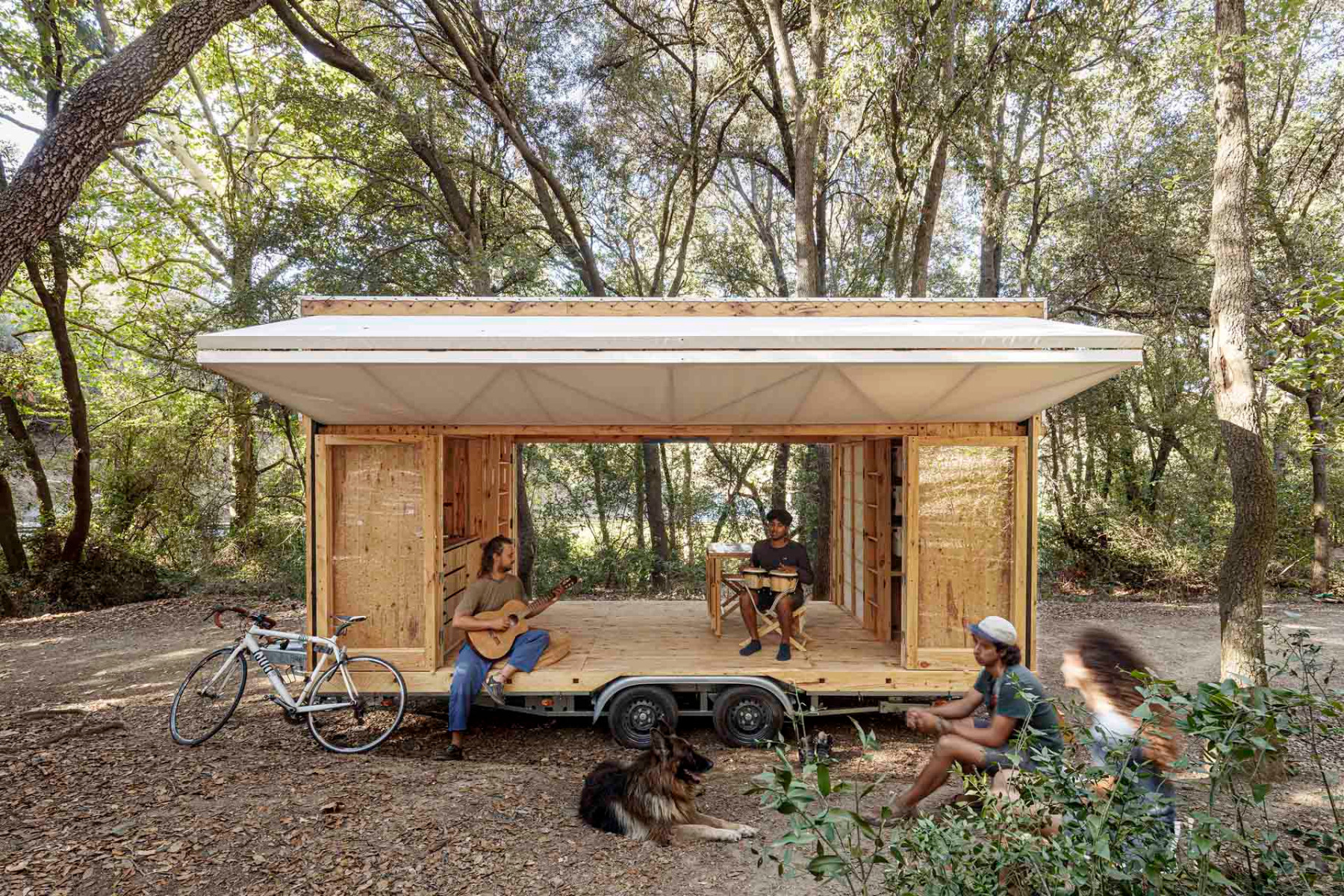The Art of Cladding
The facade is a building’s most outward-facing element. The interplay of materials, textures, colours, and transparent or opaque surfaces defines not only its external character but also its contribution to the urban fabric. While facades in past centuries evolved from traditional construction methods and locally sourced materials, today’s design possibilities are far more varied. Technical advances have extended the range of materials we can use and combine across various construction systems. Windows can be any size – from fully enclosed to fully transparent, virtually anything is possible. However, stricter regulations on thermal insulation and airtightness have introduced new constraints. Single-skin facade systems are now the exception; in most cases, a double-skin wall structure with a protective outer layer – the cladding – has become the standard.
The projects featured in this issue reveal the diverse ways architecture firms approach the art of cladding – from used roadside safety barriers repurposed for a Swiss maintenance depot to a rich mix of textures shaping an art complex in New York. When it comes to conversions, options may be more limited. In Ljubljana, the architectural character of a former printworks was preserved through barely perceptible facade interventions as it was transformed into an office and fitness centre. By contrast, the new cladding of an old port building in Den Helder, the Netherlands, radically redefines its appearance. Whether newly built or refurbished, these projects are sure to inspire. Enjoy reading and discovering! Julia Liese




Increasing Density
Projects in this Issue
-

Metal facade versus brickwork
Town Hall in Den Helder
Office Winhov and Van Hoogevest Architecten have transformed two former wharf buildings into a town hall while respecting the existing structures.
-

Football fans as neighbours
Hybrid Stadium in Tampere by JKMM
In the Finnish city of Tampere, JKMM Architects have created an unusual hybrid block that combines a football stadium with residential and commercial buildings.
-

Old building with modern canopy
Santos Coffee Warehouse in Rotterdam Renovated
The Santos coffee warehouse in Rotterdam's Rijnhaven is currently being renovated by Renner Hainke Wirth Zirn Architecten and WDJarchitecten. Originally planned as a design store for furniture, the Dutch Museum of Photography will now move in.
-

Culture in Brooklyn
Art Campus on Three Blocks by SO-IL
The north side of Brooklyn is currently undergoing transformation from an industrial area into a residential district. SO-IL's Amant, an Art Campus, where art is created and displayed, is providing an impulse for this shift.
Further Contributions on the Topic
-

Micro living with maximum freedom
IAAC designs Mobile Catalyst near Barcelona
Students from the Institute for Advanced Architecture of Catalonia (IAAC) develop MOCA – a mobile, convertible and self-sufficient home on wheels.
-

Green foyer
Copenhagen Opera Park by Cobe
Cobe has designed a green oasis in Copenhagen's inner harbour, right next to the opera house. Originally, the 21,5 ha meadow in a prime inner-city location was earmarked for residential development.
-

More light, better insulation
Camberwell Cork House in London by Delve Architects
In South London, Delve Architects renovated a Victorian terraced house and added a 20 m² cork extension.
-

Three colors: green, yellow, red
Bicocca Superlab by Balance Architettura
In Milan's industrial district of Bicocca, Balance Architettura has opened up the former office building of a steelworks operator, exposing its delicate steel structure.
-

Living in a greenhouse
Low-Energy House in London by Hayhurst & Co
London’s Green House, which was designed by Hayhurst & Co, offers a contemporary, energy-efficient reinterpretation of a greenhouse built on a residential scale.
-

Saved from demolition
Conversion of Felix Platter Hospital in Basel
The Müller Sigrist/Rapp consortium transformed the former hospital into a residential complex featuring 134 units, saving the striking 1960s high-rise block from demolition.
Vorherige Ausgaben
Previous Issues
-

Solid Construction 4.2025
Around 75 % of residential buildings in Germany are made of masonry. This enduring preference reflects growing confidence in solid construction and provides the impetus for dedicating this issue of Detail to the topic.
-

Urban Housing 3.2025
Building plots are becoming scarce, housing costs are soaring, and apartments in new developments are shrinking. The model has shifted from suburban houses to urban living. But what does that mean?
-

Digital and Sustainable 1-2.2025
What lies ahead for architecture in the digital age? To gain insight, we surveyed architects from around the globe on the role of artificial intelligence. The result is a fascinating snapshot of their perspectives.
-

Masonry 12.2024
In addition to the winning projects of the Detail Award, our December issue takes us to masonry buildings in France and southern England and to Danish brick construction.
-

Timber Construction + Prefabrication 11.2024
From residential estates and office complexes to an observation tower and an Olympic milestone in Paris, this issue showcases the versatility of timber construction through seven exemplary projects.
-

Building Envelopes 10.2024
While many new residential buildings are generic investor projects using cheap materials, Paris continues to lead with experimental milestones in the use of natural building materials. We present these building envelopes in this issue.
-

New Work 9.2024
New Work is a widely used term these days, but its meaning often remains unclear. In this concept edition of Detail, we let current projects illustrate these changes rather than providing rigid definitions.
-

Building in the Mountains 7/8.2024
From the metropolis to the solitude of the mountains: In our summer issue, we explore two highly contrasting subjects. The Olympic Games in Paris and Building in the Mountains.
-

Climate and Resources 6.2024
Sustainability encompasses various practices, all aimed at reducing carbon emissions. With this June issue, we spotlight six diverse projects that are taking steps towards a climate-neutral future in very different ways.
-

New Housing in Old Stock 5.2024
The focus should be on developing housing within existing buildings and settlementstructures – through conversions, additions, extensions, and densification. Our new issue illustrates how this can be achieved.
-

Balconies, Loggias, Terraces 4.2024
Out into the open! Our April issue delves into the construction and design of buildings with balconies, terraces, loggias, and arcades. We hope you enjoy exploring these features.
-

Schools 3.2024
Is it possible to reduce costs and guarantee quality simultaneously in construction? As we embark on the new year, we confront a pressing issue that will accompany us for some time to come.
-

Simple + Cost-Efficient 1/2.2024
Is it possible to reduce costs and guarantee quality simultaneously in construction? As we embark on the new year, we confront a pressing issue that will accompany us for some time to come.
-

Increasing Density 12.2023
This December issue is dedicated to urban density and the architectural solutions needed to achieve it. While we understand the necessity of densification, few are eager to sacrifice their own space.
-

Natural Building Materials 11.2023
In the last decade, timber construction has rapidly gained ground in the building industry. Our current issue documents multi-layered examples of the detailed application of natural building materials.
-

Windows and Facades 10.2023
Facades have always had many roles to play. They give buildings a face, protect them from the elements, and convey meaning. The examples presented in this issue highlight the merits of thoughtful facades.
-

Mixed Use 9.2023
We selected exciting projects for our September issue, focussing on mixed use concepts. They include residential and office spaces, sports halls and gastronomic functions and many more within their complex programs.
-

Saving Space 7/8.2023
Space is a type of resource we bring to light in this summer edition of Detail. Our Documentation section features innovative structures that make clever use of limited space.
-

Architecture and Climate Protection 6.2023
Anyone asking the inevitable question about climate protection in architecture today will receive not one but many answers.
-

Truth to Materials 4.2023
Debates about building materials in architecture inevitably mention the term “truth to materials” (known in German as “Materialgerechtigkeit”).
-

Hotels, Hostels, Guesthouses 3.2023
Few sectors of the economy were so battered during the corona years as the hotel industry.
-

Taking Stock 1/2.2023
Not only in Germany and Europe but also worldwide, building in existing structures is currently gaining in acceptance and relevance.
-

Building Envelopes 12.2022
While compiling our personal favourites of the year in the Detail editorial office, I was surprised at the vast scope of projects my colleagues had experienced in 2022. For this issue’s review of the year, they describe their architectural observations in places like Jerusalem, Berlin, and Montagnana, Italy.
-

Circular Economy 11.2022
If the aim is net zero, demolition and landfill disposal must be avoided at all costs. Today, a progressive architecture is one that takes part in the circular economy and reuses building materials.
-

Lighting Interiors 10.2022
Our October issue is all about light and interiors. PPAG’s school in Vienna brings daylight into deep cluster spaces to foster daily well-being.
-

Cultural Buildings 9.2022
In 1997, the Guggenheim Museum opened in Bilbao, and Frank Gehry’s eccentric new building transformed the Basque city into an overnight hotspot for international tourism.
-

Urban Green 7/8.2022
Especially in big dense cities, roofs and facades are the only places left to make things greener.
-

Simple and Affordable 6.2022
“Doing away with everything superfluous creates the potential for an architectural quality all of its own,” says Florian Nagler about “simple building” in an interview with Frank Kaltenbach.
-

Prefabrication Modular Construction 5.2022
Naturstein und Hochlochziegel, Ortbeton und Stampflehm in vorproduzierten Elementen: Für die Massivbauweise kommen viele unterschiedliche Materialien in Frage, und oft ist ihre Anwendung regional motiviert.
-

Solid Construction 4.2022
Natural stone and perforated bricks, cast-in-place concrete, and rammed earth in prefabricated elements – these are just a few of the diverse materials used in solid construction, and their use is often regionally motivated.
-

Urban Housing 3.2022
“A villa in the countryside with a large terrace, in front of you the Baltic Sea, Friedrichstrasse behind you …”. Thus begins Kurt Tucholsky’s 1927 poem, “The Ideal”. While Tucholsky’s ideal of urban life might be unattainable in Berlin, there are cities where it has become a reality.




